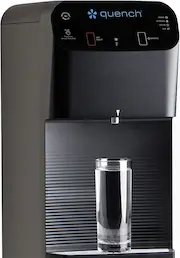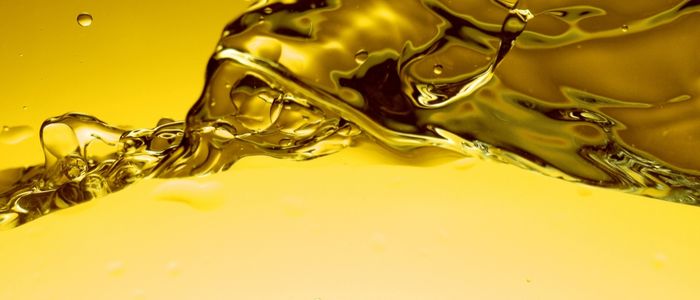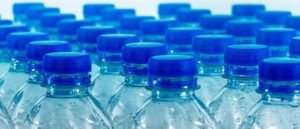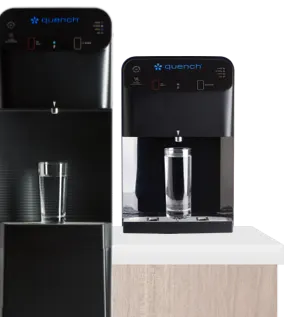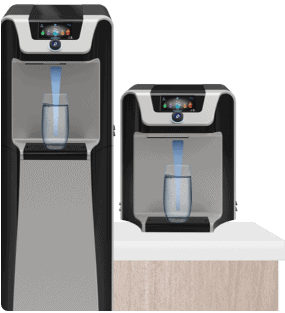Experiencing yellow water in your home or workplace can be disconcerting, to say the least, raising questions about the safety of your water supply. We’re exploring water discoloration in residential and business settings to unravel the mysteries behind this phenomenon — uncovering the root causes, assessing potential safety concerns, and offering practical solutions to restore the clarity and safety of your water.
What Is Discolored Water?
Discolored water presents itself as some shade of yellow, brown, or orange out of the blue. This is usually a sign of changes in your home or workplace’s water source or filtration system.
If you find yourself with discolored water at home or in the office, it’s likely a result of an excess presence of natural minerals like iron or manganese in your water supply. Because these minerals are denser than water, they can accumulate in pipes during periods of low use. That means you might simply notice a yellow color or brown water when you first run the tap after it’s been sitting stagnant in the water pipes. Fortunately, once you start using the pipe again, your water should return to its normal color and clarity.
However, if you’re noticing color shifts within the same day without a change in usage, then further investigation might be needed. Some of the most common culprits behind discoloration include:
- Aging water lines
- Water filtration issues
- Changes in city water pressure
- Heavy rainfall in the area
- Recent maintenance on the city’s water treatment system
The Factors Contributing to Yellow Water at Home or Work
So, what about yellow water specifically? The presence of yellow water in your home or workplace often suggests elevated iron levels. But, don’t worry! It sounds scarier than it actually is. This yellow tint is usually a result of iron coming into contact with oxygen, which leads to the formation of rust.
Occasionally, local incidents like water main breaks can stir up pipe sediments, causing water to flow faster and leading to a sudden appearance of yellow tap water. Or, oxidation can enter your water pipes from external sources and remain there until a faucet is turned on. Municipal water authorities generally flush their supply lines at regular intervals to clear any sediment accumulation and avoid these circumstances.
Is Yellow Water Safe To Drink?
When you run into water with a yellow tint, it’s understandable to have immediate concerns about health risks, potential waterborne contaminants, unsightly staining and damage, or even legal compliance issues. Fortunately, because yellow water is typically due to minor rust presence, health concerns are rare.
In fact, many causes of tap water discoloration fall within the Environmental Protection Agency’s (EPA) “secondary standards.” These standards establish recommended maximum levels for 15 contaminants that may affect the water’s color, odor, or taste but are generally not harmful to your health. Essentially, when it comes to yellow tap water at home or work, the EPA reports there are no recognized side effects of drinking rusty water and no enforceable federal limits on the amount of rust in drinking water.
It’s important to keep in mind that the safety of drinking yellow water ultimately depends on the underlying cause. More often than not, this water discoloration is a result of harmless factors like increased iron levels or innocuous sediments. Regardless, it’s crucial to investigate the source of discoloration, especially if it’s a sudden or persistent problem, because this might signify more serious issues.
For instance, yellow water can also be a result of sediment (i.e., tiny rust particles) in the water sitting inside the pipes and sticking to the walls. Over time, this can make the pipe linings wear down and eventually cause them to break. When water flows through weaker pipes, they’re more likely to develop cracks — leading to leaks that can seep into your building’s plumbing. When water starts leaking where it shouldn’t, it can potentially cause damage to your property.
What To Do When Your Workplace or Household Has Yellow Water
Whether you’re trying to fix yellow water at home or work, there are a few practical steps and best practices that you can use to effectively address the issue or prevent it from occurring in the first place:
1. Find The Source
To effectively address water discoloration, you’ll need to determine its source. If your water source is local, you should call a plumber to evaluate the feasibility and costs associated with removing and replacing the affected piping. This helps restore the water’s clarity while preventing potential damage to your plumbing infrastructure — ensuring the long-term reliability of your water supply.
On the other hand, if the city’s water supply is the culprit, consider investing in a dependable water filtration system from Quench for your property. This gives you access to more than just high-quality filtration, but also a virtually endless supply of clean water on demand. With a more efficient and effective bottleless water dispenser and filtration system in place, you can confidently tackle water discoloration issues to ensure your home or workplace consistently enjoys clear and safe water.
2. Introduce Regular Water Testing
One of the first and most crucial steps to invest in when you find yourself with discolored water is regular water testing. Periodic testing gives you more visibility over what’s in your water supply, revealing the presence of minerals, contaminants, or other factors contributing to water turning yellow.
By partnering with a reliable water service provider, like Quench, you can elevate your water testing with access to our team of Quench Water Experts. With a comprehensive understanding of water conditions across the nation, these professionals assess your local drinking water and utilize this information to recommend and tailor the most suitable water filtration solution for your household or company.
3. Manage Iron-Related Problems
To address iron-related issues in your water supply at home or work, it’s best to use specialized filters designed for this purpose. These filters are particularly good at capturing iron when it’s in a larger flaky form, known as ferric-based contamination. If this is the problem, you can consider using filters with a two-micron rating because they can treat a significant amount of water.
Dealing with another type of iron contamination, known as ferrous iron, is generally more complex because it comes from different sources that require unique elimination procedures. One effective method is the use of an ionic exchange system. This separates iron and other minerals like calcium and magnesium by applying an electrical charge to the water — which repels these minerals at a molecular level. While the effectiveness can vary, this process is a comprehensive solution to removing minerals that could be behind your water turning yellow.
4. Carry Out Regular Maintenance
Adhering to a routine maintenance schedule for your filters is key to maintaining the clarity and purity of your water. This should include regularly cleaning and replacing filters as per the manufacturer’s recommendations. It’s also a good idea to consult a professional plumber to conduct a thorough inspection of your property every few years. A proactive approach to maintenance ensures that your water filtration system operates at its best and helps safeguard your water supply from rust-related issues.
With a Quench bottleless water dispenser, you enjoy regular maintenance provided by certified Quench technicians who conduct an 11-point inspection and upkeep service. Plus, our representatives are available for support from 8 a.m. to 8 p.m. ET to answer questions, problem-solve, and arrange prompt service calls when needed.
The Value of a Bottleless Water Dispenser and Filtration System
If you’re put off by the color of your household or workplace water, you can say goodbye to concerns about yellow water with our bottleless water dispensers and quenchWATER+ filtration systems. Quench’s exclusive mineral-infused and electrolyte-enhanced alkaline water, quenchWATER+, is created by our bottleless water coolers that feature a cutting-edge five-filter setup. This includes advanced filtration methods like reverse osmosis and carbon filters, along with mineral addback functionality.
By partnering with Quench, you can find the ideal water solution for your unique needs, discover the remarkable difference in taste and appearance of your drinking water, and experience the benefits of improved water quality. Explore our quenchWATER+ technology or get a free estimate to get started.
